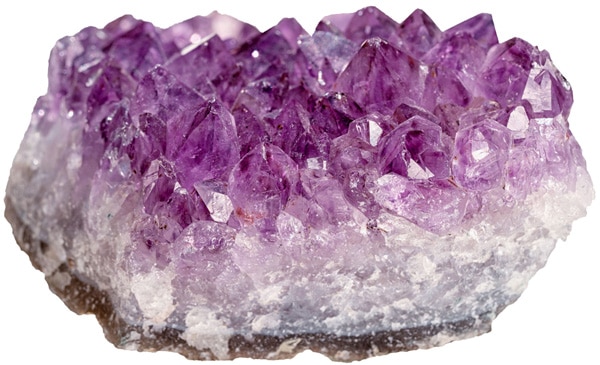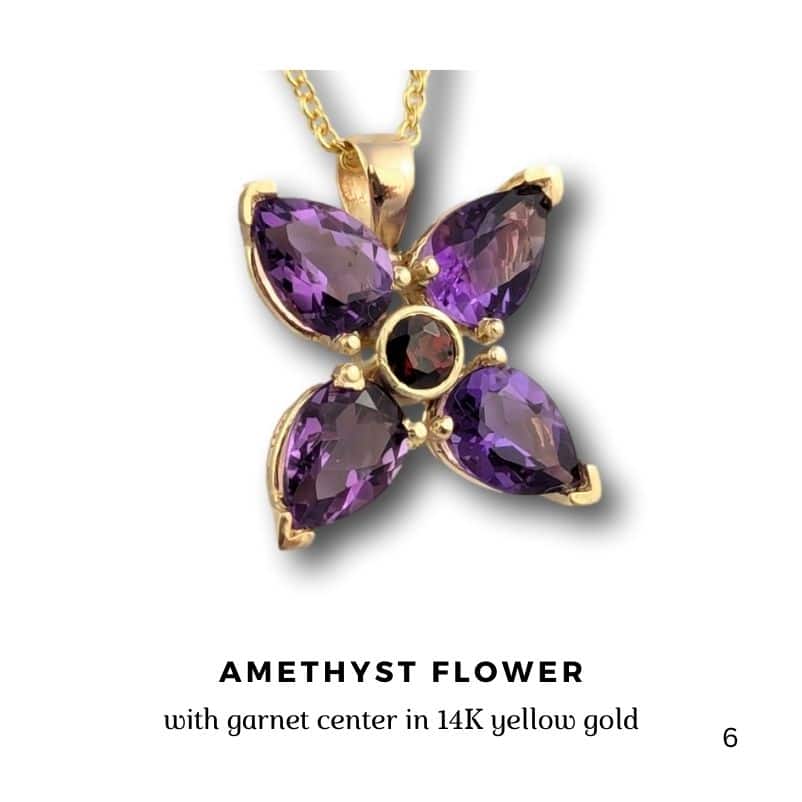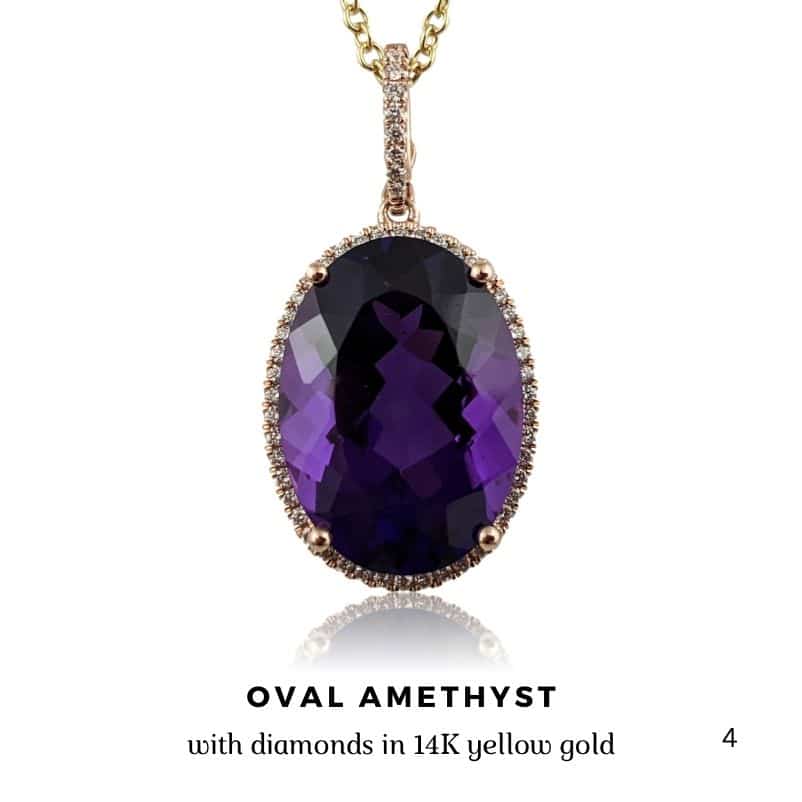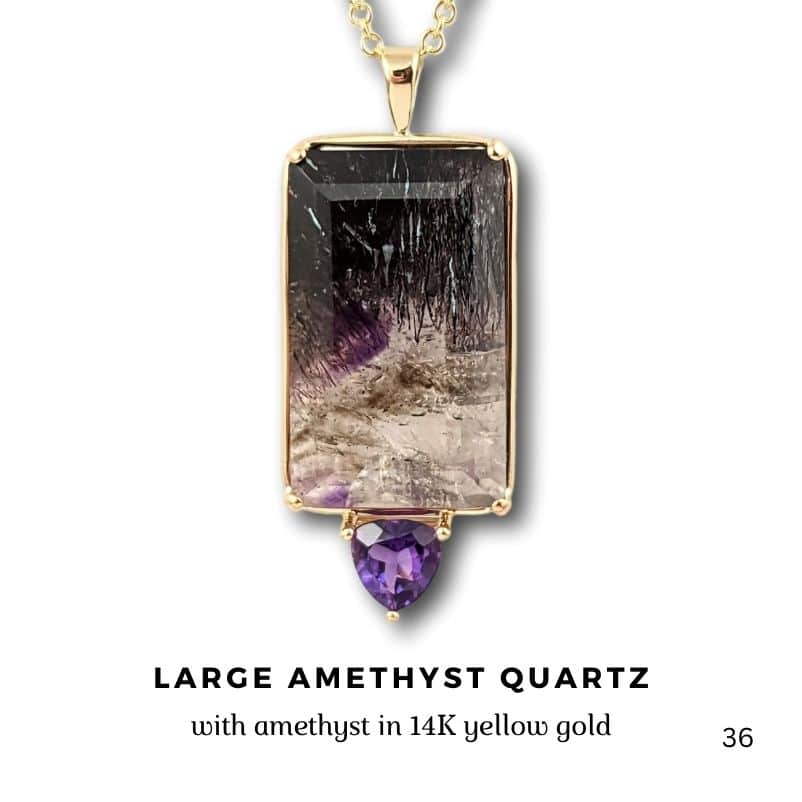
Amethyst: February’s Birthstone with Royal Charm
If you were born in February, you share a connection with one of the most beloved and symbolic gemstones. The amethyst birthstone is prized for its stunning purple hues, versatility, and meaningful history. From ancient royalty to modern jewelry lovers, this gem continues to captivate.
At Copeland Jewelers in Austin, we’re experts in birthstone jewelry and love designing custom fine jewelry. Whether set in silver, gold, or platinum, this variety of quartz brings elegance and personality to any piece.
What Is Amethyst?
The name “amethyst” comes from the Greek word amethystos, meaning “not drunk.” Ancient Greeks believed the stone could protect against intoxication and even carved wine cups from amethyst to ward off Dionysus’s charms.
Amethyst is a member of the quartz family, one of the most abundant minerals on earth. Its rich purple color is due to trace elements like iron and natural irradiation.
Shades range from soft lavender to deep, velvety purple. The most desirable color is known as “Deep Siberian,” a luxurious purple with flashes of red and blue.
Did you know? Green quartz is sometimes mislabeled as “green amethyst,” but its proper name is prasiolite.
Amethyst Colors and Types
While all amethysts are purple, they offer a range of tones and saturations:
- Light Lilac: Soft pastel shades for delicate jewelry pieces.
- Royal Purple: Rich and vibrant, perfect for statement designs.
- Deep Siberian: The finest quality, with intense purple and hints of red or blue.
Cutting is essential to showcase amethyst’s color zoning, where lighter and darker layers can appear in a single stone.
In rare cases, heat-treated amethyst can transform into citrine or prasiolite, creating unique bi-colored stones called ametrine. These gems display both yellow and purple hues and are a popular choice for collectors.
A Stone Steeped in History
Amethyst has been treasured for over 25,000 years:
- Ancient cultures: Prehistoric artifacts in France feature carved amethysts.
- Christianity: Amethyst has long symbolized piety and was favored in bishops’ rings.
- Royalty: Deep purple amethyst jewelry adorned European monarchs for centuries.
- Saint Valentine: Legend says he wore an amethyst ring carved with Cupid’s likeness.
Tibetans also consider amethyst sacred to Buddha, often using it for prayer beads.
Where Is Amethyst Found?
- South America: Brazil and Uruguay produce large, deep purple geodes.
- Africa: Zambia is known for high-quality, saturated amethysts.
- North America: Found in Arizona, North Carolina, and Canada.

Why Amethyst Jewelry Is So Popular
Amethyst ranks 7 on the Mohs hardness scale, making it a durable option for everyday wear. Its affordability compared to other gemstones means even larger cut amethysts remain accessible for most budgets.
Amethyst jewelry pairs beautifully with both warm and cool tones, making it easy to style. Whether set in yellow gold for a vintage look or white gold for modern elegance, its deep purple color stands out.
Amethyst Symbolism and Meaning
Throughout history, the February birthstone has been associated with:
- Peace and clarity: Believed to calm the mind and encourage clear-headedness.
- Strength and courage: Worn as a protective talisman in battle.
- Love and devotion: A symbol of Saint Valentine and romantic fidelity.
While modern science doesn’t confirm these effects, many still wear amethyst as a meaningful or spiritual stone.
How Amethysts Are Valued
- Color: The richest, most saturated purple tones are the most prized. Stones with even color and flashes of red or blue, known as “Deep Siberian”, are considered top quality. Paler or uneven hues are less valuable.
- Clarity: Fine amethysts are eye-clean, meaning they show no visible inclusions. Stones with noticeable internal flaws tend to be more affordable.
- Cut: A well-executed cut enhances the stone’s brilliance and minimizes any natural color zoning. Poor cuts can make even a richly colored stone appear dull.
- Carat Size: Unlike many gems, large amethysts are not rare. Bigger sizes remain accessible, but exceptional color in larger stones can command higher prices.
Caring for Your Amethyst Jewelry
To keep your amethyst jewelry looking its best:
- Clean with mild soap, warm water, and a soft brush.
- Ultrasonic cleaners are safe for high-quality stones, but avoid steam cleaning.
- Store away from harder gems like diamonds to prevent scratching.
- Protect from prolonged sunlight and extreme heat, which can fade or alter its color.
LEARN MORE: Tips For Keeping Your Jewelry Clean
Fun Fact: The World’s Largest Amethyst Geode
One of the largest amethyst geodes ever discovered is called the “Empress of Uruguay.” Standing over 11 feet tall and weighing 2.5 tons, this stunning deep purple geode was unearthed in Uruguay and is now on display at the Crystal Caves Museum in Australia.
Explore Amethyst Jewelry at Copeland Jewelers
Looking for a memorable birthday gift, celebrating an anniversary, or creating a custom design? The amethyst birthstone offers timeless elegance and deep purple beauty.
At Copeland Jewelers, our experts can help you explore a variety of amethyst jewelry or craft a custom piece that fits your style perfectly. View our custom jewelry gallery, visit our Austin showroom, or call us today to get started.



